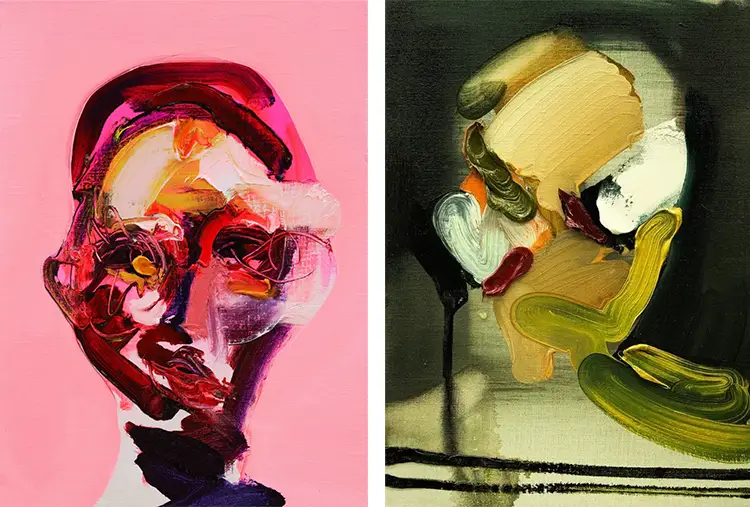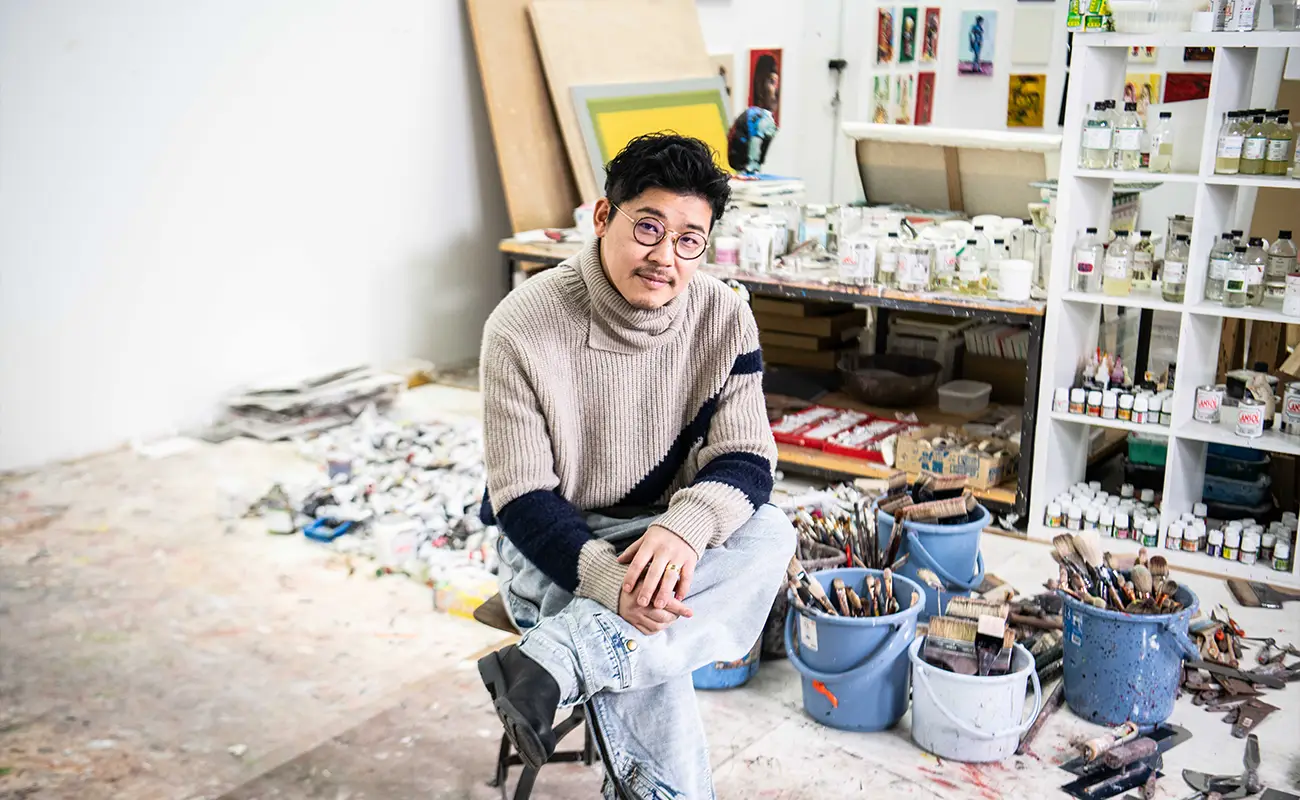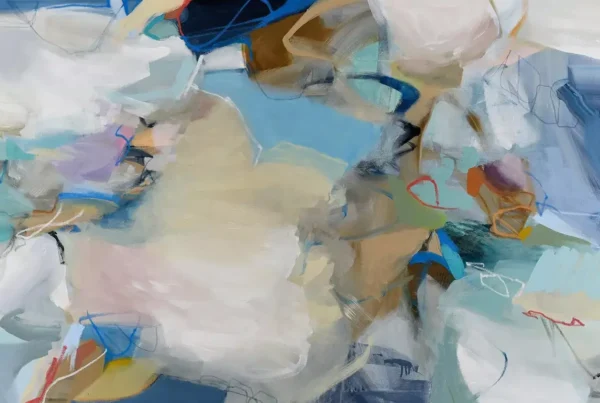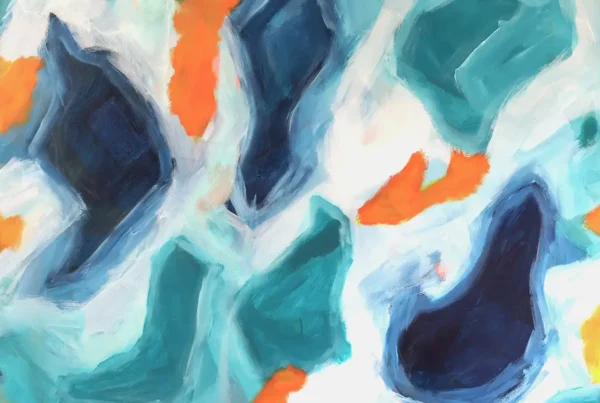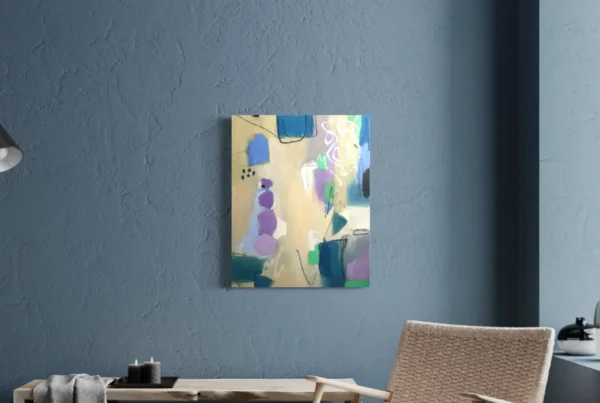A Painter of Fleeting Time and Emotional Gravity
The work of Yukimasa Ida occupies a singular space within contemporary painting, at once rooted in oil’s visceral traditions and in tension with the clarity of the digital present. Born in 1990 in the coastal town of Tottori, Japan, Ida’s artistic voice developed amid the sensory richness of ocean, mountain, and river landscapes—elements that echo subtly through his textured surfaces and eruptive color palettes. While his early training at Tokyo University of the Arts provided technical grounding, it is his philosophical engagement with impermanence that drives the emotional charge of his work. His recurring invocation of ichi-go ichi-e—a Zen concept that reveres the uniqueness of a single unrepeatable moment—serves as both method and message. Ida’s practice, fueled by personal loss and global exposure, seeks not to memorialize events, but to grasp the instant as it slips away, always just out of reach.
The urgency of Ida’s visual language stems in part from his unusual techniques. Applying pigment with bare hands or spatulas rather than brushes, he manipulates oil into sculptural gestures that straddle the boundary between form and chaos. Through this approach, Ida resists the confines of conventional realism while avoiding the total dissolution of abstraction. His paintings are not portraits in the traditional sense; they are energetic vessels through which identity and presence flicker, disintegrate, and reassemble. The visible marks of creation—slashes, scrapes, thick impasto—become analogs for memory itself, as unpredictable and mutable as the lives they evoke. His works are not only representations but also active records of movement, time, and erasure.
Over the past decade, Ida’s art has found an expanding international audience. His exhibitions span continents, from Tokyo to Paris, London to Chicago, with institutional recognition and collectors ranging from Takashi Murakami to Leonardo DiCaprio. Yet despite global acclaim, his thematic compass remains consistent. Each canvas questions the authenticity of presence and the instability of perception, all while remaining visually arresting. Whether collaborating with fashion houses like Dior or staging solo shows such as Flaming Memory, Ida channels deeply personal and universally resonant experiences into each piece. His art does not strive to resolve life’s ambiguity; instead, it lets that ambiguity breathe and burn on the surface.
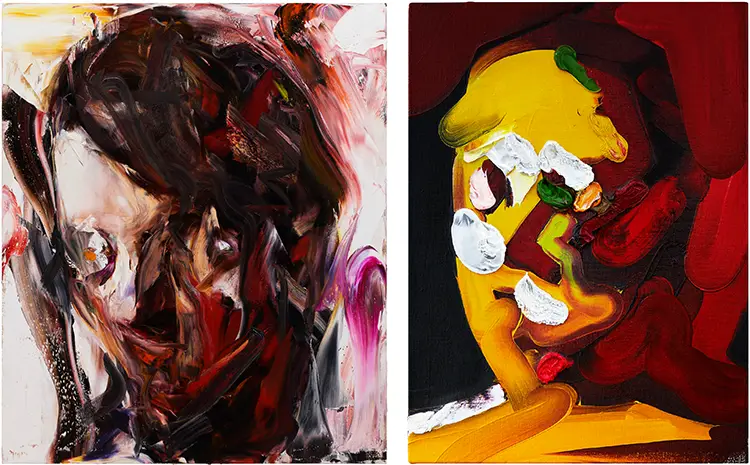
Sumi
2022, Oil on canvas
©IDA Studio Inc.
End of today – 9/5/2018 Self Portrait
2018, Oil on canvas
© IDA Studio Inc.
Yukimasa Ida: Portraits on the Edge of Disappearance
Ida’s portraits refuse the stillness often associated with the genre. Instead, they pulse with life, collapsing and reforming before the viewer’s eyes. His figures are not fixed likenesses but slippery entities made of vivid color and volatile line. Through distorted forms and fractured gestures, Ida unmoors the face from its traditional role as a symbol of identity, turning it into a field of emotional energy. The use of vibrant reds, acidic yellows, and bruised blues transforms the canvas into an arena of emotional conflict, reflecting the complexity of contemporary existence. There is no clear narrative, only impressions—the aftermath of presence, the trace of connection.
In works such as those featured in Flaming Memory, Ida draws upon the physical vocabulary of painters like de Kooning and Auerbach, treating the surface as a battlefield for sensation. His brushwork often borders on violent, with dense textures scarred by palette knives and pigment piled so heavily it gains sculptural weight. But this physicality is not performative; it functions as an analogue to the instability of human memory. The faces that emerge and recede across Ida’s canvases serve as reminders that recollection is never whole, only partial and always vulnerable to distortion. Each painting is a psychological excavation, uncovering how identity can fragment and reform in the wake of loss, time, and change.
Even when rendered with force, Ida’s work conveys fragility. The tension between solidity and dissolution invites viewers to linger, to question what it is they are seeing and what might be slipping past their comprehension. It’s a visual articulation of our digital age’s contradiction: the need for clarity set against the impossibility of capturing what is most meaningful. Ida resists polished finishes and clear contours in favor of an emotional immediacy that transcends representation. His portraits don’t aim to define who someone is, but rather to hold space for the truth that our selves are in constant flux.
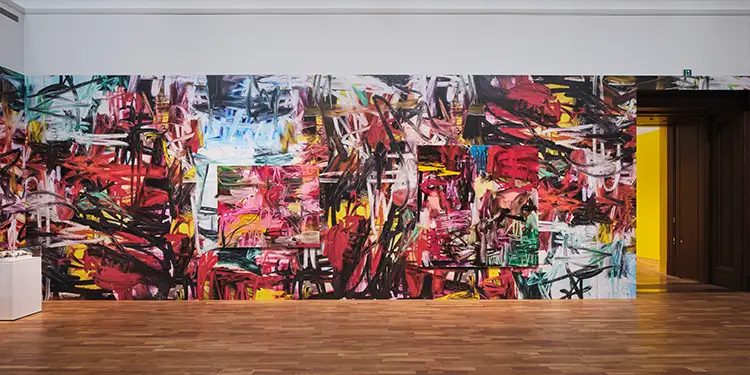
©IDA Studio Inc.
Flesh, Form, and the Fiction of Permanence
Beyond the canvas, Ida also works in sculpture, extending his exploration of impermanence into three-dimensional space. His bronze “heads” bear the same aggressive, spontaneous markings as his paintings, as if shaped by the impact of a palette knife rather than a sculptor’s chisel. These forms are not smooth or idealized; instead, they seem caught mid-gesture, frozen between emergence and collapse. The tension in these objects mirrors the uncertainty in his paintings, reinforcing the idea that identity and time are never static. In these sculptures, as in his canvases, Ida underscores the uneasy relationship between memory and matter, form and formlessness.
Ida’s commitment to ambiguity is never casual. His decisions around color, shape, and texture are informed by formal studies in color theory and composition. Despite their chaotic appearance, his works are underpinned by a strong sense of visual discipline. The unpredictability of brushstrokes is counterbalanced by a thoughtful use of spatial dynamics and chromatic contrast. His explosions of color are often carefully choreographed to lead the viewer’s eye across the surface, creating rhythms that evoke both energy and melancholy. This blend of spontaneity and control reflects the emotional complexity Ida seeks to express: joy colliding with grief, clarity dissolving into confusion, and the beautiful discomfort of being alive.
Though often interpreted as autobiographical, Ida’s work intentionally resists singular readings. He avoids overt narratives or symbolic cues, preferring instead to allow each viewer to bring their own associations. What unites his sculptures and paintings is their openness—an invitation to experience rather than to decode. By placing his subjects at the intersection of abstraction and figuration, Ida compels us to reconsider our expectations of what art can tell us about the human condition. Through color, gesture, and materiality, he captures something elusive: not a person or a memory, but the fleeting echo of both.
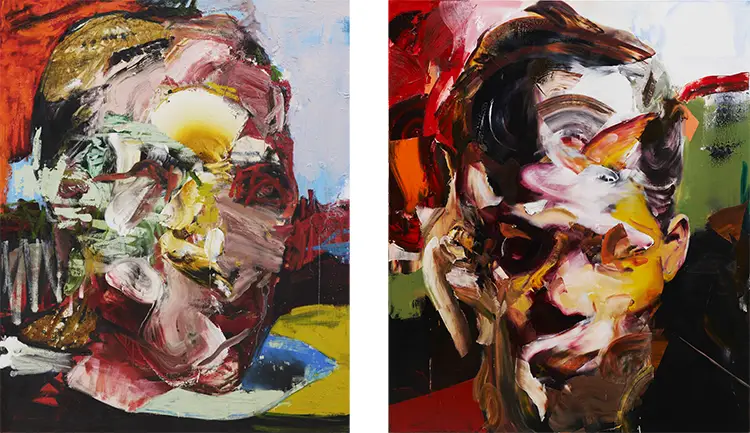
Self Portrait
2025, Oil on canvas
©IDA Studio Inc.
Self Portrait
2021, Oil on canvas
©IDA Studio Inc.
Yukimasa Ida: Crystallizing the Ephemeral
At the heart of Ida’s artistic philosophy lies a profound respect for the impermanent. His core concept, ichi-go ichi-e, serves as both an ethical stance and a visual strategy. Every painting he creates is treated as a singular opportunity, a moment that will never repeat. This awareness of transience drives him to work rapidly, using tools and techniques that force him to relinquish control. Painting with his hands or spatulas allows him to respond instinctively to the present, collapsing the distance between thought and form. This immediacy becomes visible in the finished work, where motion and stillness intertwine in a visual expression of passing time.
Ida’s process is not only about speed but about depth of perception. He approaches each painting as a conversation with memory and presence, aware that what is captured on the canvas is already lost in life. In his own words, each piece is both a record and a question—a crystallization of a moment and an inquiry into its meaning. The works resist closure, often feeling suspended between being and becoming. By blurring background and subject, and by refusing to anchor his compositions in defined narrative, Ida builds a space for uncertainty. In that space, viewers find room to confront their own fleeting experiences.
This intersection of personal reflection and universal resonance gives Ida’s work its emotional intensity. His compositions do not seek perfection or permanence; rather, they make room for fragility, failure, and flux. Whether depicting a flicker of a face or an amorphous form, Ida captures not the thing itself, but its disappearance. In doing so, he reminds us that beauty lies not in what lasts, but in what cannot be held. Through paint and gesture, Yukimasa Ida has created a practice that transforms the act of looking into a meditation on loss, presence, and the preciousness of now.
